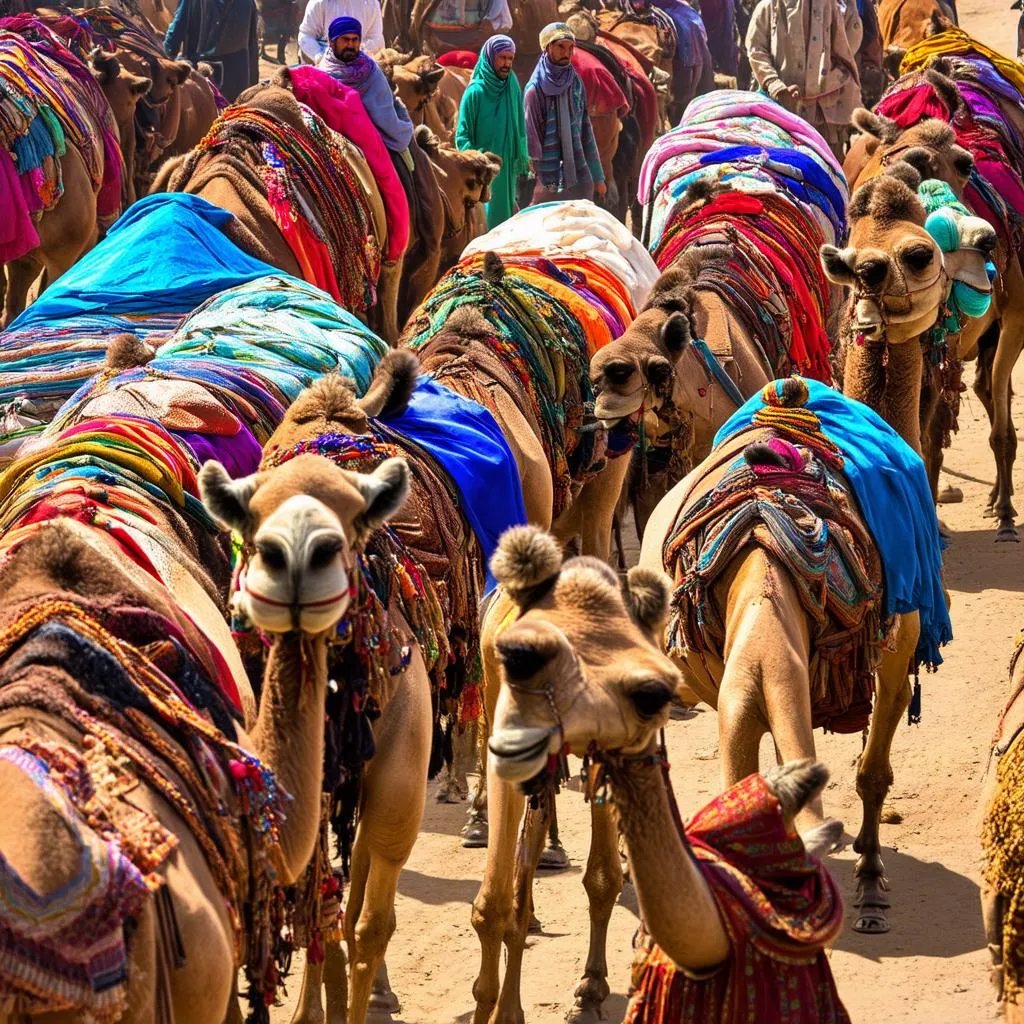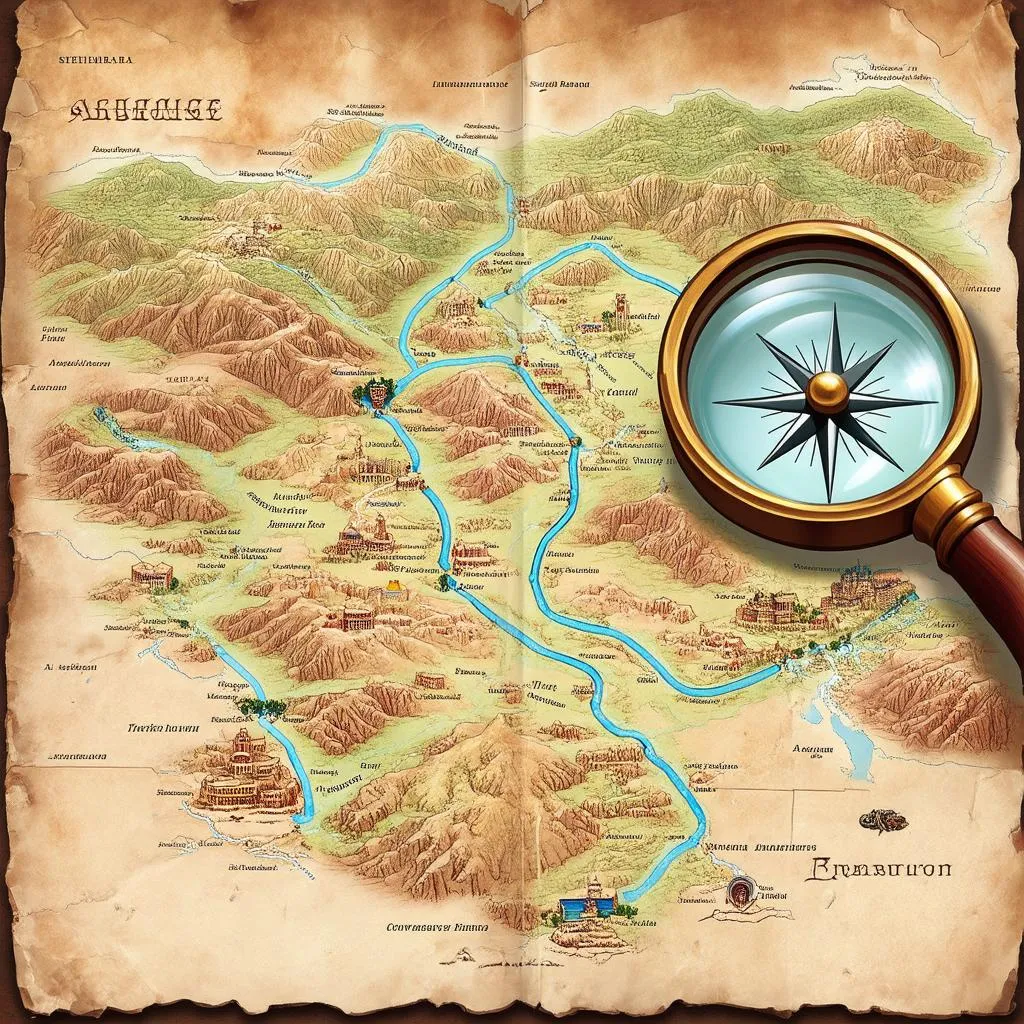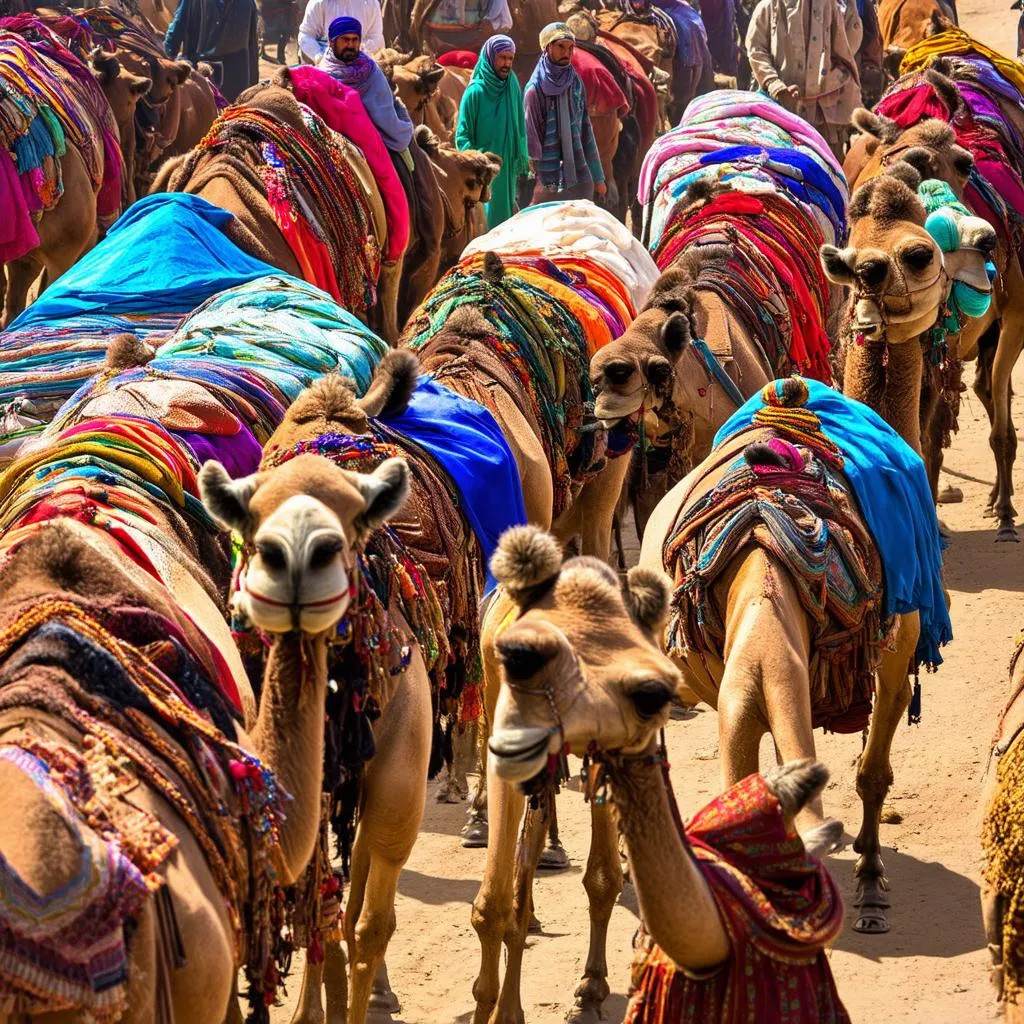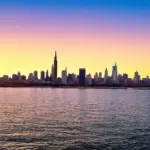Have you ever wondered what to call a group of traveling merchants, those intrepid souls who traversed ancient trade routes, bringing exotic goods and stories from far-off lands? Their journeys were fraught with danger and adventure, their caravans a lifeline connecting distant cultures. These groups have fascinated historians and storytellers for centuries, and their legacy lives on in the very fabric of our globalized world.
More Than Just Merchants: Unveiling the Caravan
The most common term for a group of traveling merchants is a caravan. This evocative word conjures images of camels laden with silks and spices, winding their way across the Sahara Desert or the Silk Road.
But a caravan was more than just a collection of merchants. It was a microcosm of society on the move, a self-sufficient entity that included:
- Merchants: Trading goods was the primary purpose, with merchants specializing in everything from precious stones to everyday necessities.
- Guards: Protecting the caravan from bandits and raiders was paramount. Skilled warriors ensured the safety of both people and goods.
- Animal Handlers: Camels were the workhorses of many caravans, requiring experienced handlers for their care and management.
- Artisans and Craftspeople: The caravan often included skilled individuals who could repair goods, provide services, and even create new items along the way.
The Importance of Caravans in History
Caravans played a pivotal role in shaping our world:
- Trade and Commerce: They facilitated the exchange of goods, ideas, and technologies across vast distances. Imagine the silk from China gracing Roman emperors or the spices of India flavoring the dishes of medieval Europe – all thanks to caravans.
- Cultural Exchange: As caravans traveled, they acted as conduits for cultural transmission. Religions, languages, and artistic styles spread along these ancient routes, leaving an indelible mark on the world.
- Exploration and Discovery: Caravan routes often became the foundation for future exploration and territorial expansion. The Silk Road, for example, opened up Central Asia to the world.
A Story of Silk and Spices: Following the Footsteps of History
Imagine yourself in the bustling marketplace of Xi’an, China, circa 1000 AD. You are amidst a cacophony of languages and a kaleidoscope of goods as a caravan prepares to depart on the legendary Silk Road. Merchants haggle over bolts of shimmering silk, their voices mingling with the braying of camels and the shouts of caravan leaders. This is the vibrant world of the traveling merchant, a world where adventure and commerce intertwined to shape the destiny of nations.
 Bustling Silk Road Caravan
Bustling Silk Road Caravan
Planning Your Own Journey of Discovery: Exploring the Legacy of Caravans Today
While the era of the camel caravan has largely faded into history, you can still experience the thrill of following in the footsteps of these ancient travelers.
- Visit the remnants of caravan cities: Cities like Samarkand in Uzbekistan, Petra in Jordan, and Xi’an in China still bear witness to their glorious past as vital stops along ancient trade routes.
- Explore Silk Road museums: Numerous museums around the world are dedicated to showcasing the history and artifacts of the Silk Road, offering glimpses into the lives of traveling merchants.
- Embark on a themed tour: Several tour operators offer specialized itineraries that retrace portions of historic caravan routes, allowing you to experience the adventure and cultural richness firsthand.
FAQs about Traveling Merchants and Caravans
What other names were used for groups of traveling merchants?
- Caravan remains the most common term, but other names included:
- Train: Used more in the context of pack animals transporting goods
- Company: A more general term, but could refer to a group of merchants
- Guild: In some cases, merchants belonged to guilds that provided protection and regulated trade.
Were all caravans large and elaborate?
No, caravans varied greatly in size and composition. Some were small, consisting of a handful of merchants and their guards, while others were massive undertakings, involving hundreds of people and animals.
What were some of the challenges faced by traveling merchants?
- Bandits and Raiders: Attacks were a constant threat, and caravans often had to be heavily guarded.
- Harsh Weather Conditions: Extreme heat, cold, and storms could disrupt travel and endanger both people and animals.
- Disease: Traveling for extended periods in close quarters made illness a serious risk.
- Political Instability: Conflicts and wars could close down trade routes or make travel unsafe.
Travelcar.edu.vn: Your Guide to Exploring the World
Ready to embark on your own adventure? Visit TRAVELCAR.edu.vn for travel inspiration, tips, and resources to help you plan your next journey. Whether you dream of retracing the steps of ancient merchants or forging your own path, we’re here to guide you.
 Antique Map with Caravan Route
Antique Map with Caravan Route
Conclusion
From the bustling marketplaces of the Silk Road to the dusty trails of the Sahara, traveling merchants and their caravans have left an undeniable mark on history. Their stories remind us of the power of human ingenuity, the interconnectedness of our world, and the allure of exploring the unknown. So, the next time you encounter the word “caravan,” take a moment to appreciate the legacy of these remarkable travelers and the impact they had on shaping our world.

